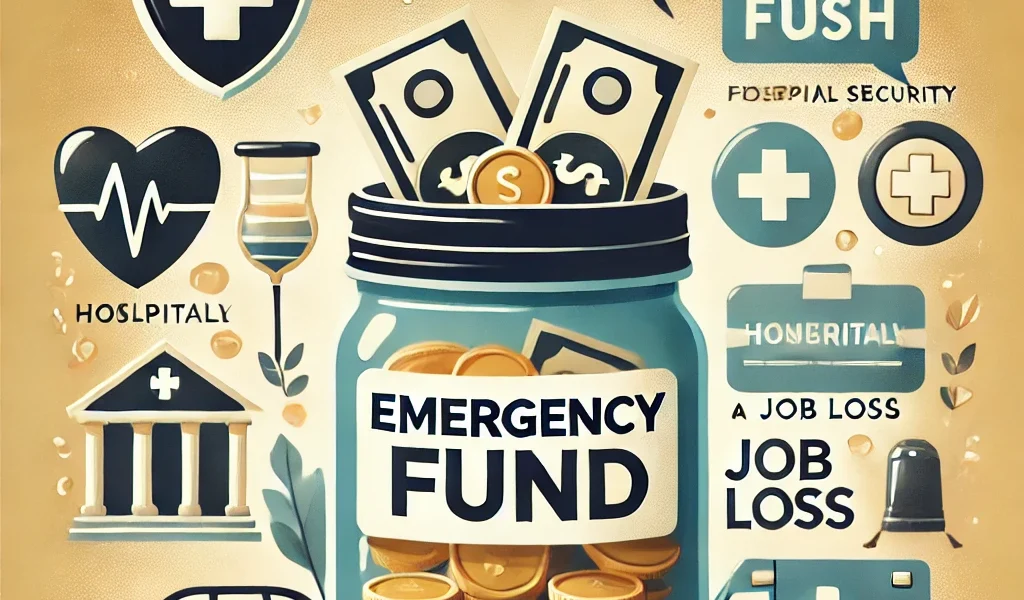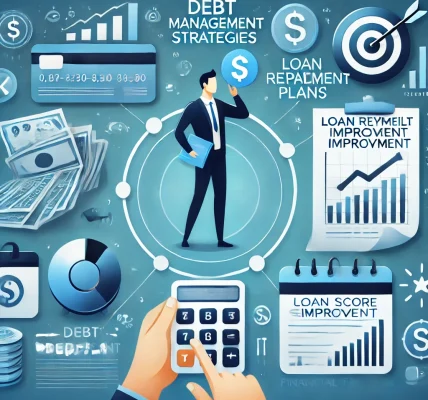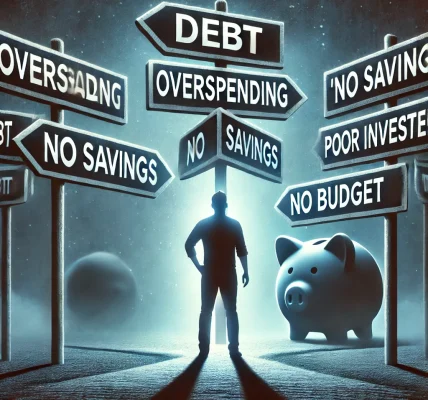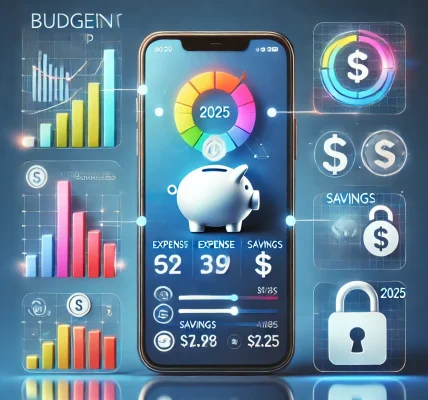An emergency fund is one of the most crucial financial safety nets you can have. Life is unpredictable, and unexpected expenses can arise at any time, whether it’s medical emergencies, job loss, car repairs, or home maintenance. Having an emergency fund ensures that you can handle such situations without falling into debt. In this comprehensive guide, we will explore why you need an emergency fund and how you can build one effectively.
Why You Need an Emergency Fund
1. Financial Security in Unexpected Situations
Emergencies can happen at any time, and they often come with hefty expenses. Having an emergency fund allows you to handle these financial surprises without disrupting your daily life or long-term financial plans.
2. Avoiding Debt
Without an emergency fund, you may be forced to rely on credit cards or personal loans, which often come with high interest rates. This can lead to long-term debt and financial stress.
3. Peace of Mind
Knowing that you have a financial cushion helps reduce stress and anxiety. You won’t have to worry about how to handle unexpected expenses when you have money set aside.
4. Protecting Your Long-Term Investments
An emergency fund prevents you from withdrawing money from your retirement accounts or investments, which can disrupt your long-term financial goals.
5. Job Loss Protection
If you lose your job, an emergency fund can help cover your essential expenses while you search for a new one, preventing you from making rushed decisions due to financial pressure.
How Much Should You Save in an Emergency Fund?
The ideal amount for an emergency fund depends on your lifestyle, monthly expenses, and financial obligations. Here’s a general guideline:
- Beginners: Start with at least $1,000 to cover minor emergencies.
- Basic Safety Net: Aim for 3 months’ worth of essential expenses.
- Comprehensive Protection: For greater financial security, save 6-12 months’ worth of living expenses.
Calculate your essential expenses (rent/mortgage, groceries, utilities, insurance, and loan payments) to determine how much you need to set aside.
How to Build an Emergency Fund
1. Set a Realistic Goal
Start by determining your ideal emergency fund size and break it into smaller, manageable milestones. For example:
- First goal: Save $1,000.
- Second goal: Save one month’s worth of expenses.
- Final goal: Reach 3-6 months’ worth of expenses.
2. Open a Separate Savings Account
Keep your emergency fund in a dedicated high-yield savings account that is easily accessible but separate from your daily spending accounts. This prevents you from spending the money impulsively while ensuring it grows with interest.
3. Automate Your Savings
Set up automatic transfers to your emergency fund from your paycheck or checking account. Even small, consistent contributions can add up over time.
4. Cut Unnecessary Expenses
Identify non-essential expenses, such as dining out, subscriptions, or impulse shopping, and redirect that money into your emergency fund.
5. Use Windfalls Wisely
Whenever you receive extra money, such as a tax refund, work bonus, or inheritance, allocate a portion of it to your emergency fund.
6. Pick Up a Side Hustle
If your budget is tight, consider earning extra income through freelancing, gig work, or selling unused items to boost your savings faster.
7. Reduce High-Interest Debt
If you have high-interest debt (e.g., credit card debt), balance saving with debt repayment. Allocate a portion of your budget to both, ensuring financial stability.
8. Adjust Contributions Over Time
Life circumstances change, so revisit your emergency fund strategy periodically. If your expenses increase (e.g., new rent, family expansion), increase your savings goal accordingly.
Where to Keep Your Emergency Fund
Best Options:
- High-Yield Savings Account: Provides easy access and earns interest.
- Money Market Account: Offers higher interest rates with check-writing privileges.
- Short-Term Certificates of Deposit (CDs): Can be a good option if you don’t need immediate access.
Where NOT to Keep It:
- Investments like Stocks or Mutual Funds: Market fluctuations can lead to losses.
- Cash at Home: While accessible, it doesn’t earn interest and can be lost or stolen.
When to Use Your Emergency Fund
Your emergency fund should only be used for true financial emergencies, such as:
- Medical emergencies or unexpected healthcare costs.
- Job loss or sudden reduction in income.
- Urgent home or car repairs.
- Unforeseen legal expenses.
Avoid using it for non-urgent expenses like vacations, shopping, or elective upgrades.
How to Rebuild Your Emergency Fund After Using It
If you need to dip into your emergency fund, make a plan to replenish it as soon as possible:
- Adjust your budget temporarily to allocate more towards savings.
- Pause non-essential spending until your fund is restored.
- Increase your savings rate through extra income or bonuses.
Final Thoughts
An emergency fund is an essential financial tool that provides security, reduces stress, and prevents debt accumulation. By setting realistic goals, automating savings, and making smart financial choices, you can build a strong emergency fund without straining your budget. Start today, stay consistent, and protect your financial future!



